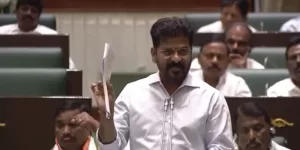In the early 1900s when legendary musicologist, Pandit V.N. Bhatkhande, reached the south of India as part of his epic sojourn through the country to consolidate music systems, he was disappointed.
In accounts of these tours recorded in his travelogue, Majha Dakshinecha Pravaas (My Musical Journey in Southern India), and in some of his letters and lectures, he expressed his dissatisfaction not only with what he described as “this yaiyy yaiyy style of singing” but also with the fact that south of India did not quite turn out to be the land of untouched Shastric music that he was seeking. It was instead a colourful amalgam that included folk, Islamic and Christian musical styles too. The ardent, anti-Muslim Sanskritist in him was not pleased.
Bhatkhande was not alone in his conception and more than a hundred years after his not-so-pleasant discovery, this narrative of the ‘pure South’ continues to drive the scholarship and public consumption of its classical arts. According to Davesh Soneji, Associate Professor, Department of South Asia Studies, University of Pennsylvania, this notion has resulted in the erasure of a rich tradition of Tamil Muslim and Christian music and many other art forms practised by non-Brahmin or Hindu artist communities.
Examining the arduous in the arts
At a webinar titled ‘The Arduous Arts: Caste, History, and the Politics of “Classical” Dance and Music in South India’, organised by the University of California, Los Angeles, on January 11, Soneji and others examined these and related issues that rarely get discussed.
With conversations about equity gaining prominence, said Professor Anna Morcom, Mohindar Brar Sambhi Chair of Indian Music, UCLA Department of Music, “now seemed the right time to run this panel, because of the momentum of BLM which is causing more discussion and reflection about class amongst South Asian scholars internationally and in India… The debates on caste are becoming more open and heated especially in the world of south Indian classical dance… (and) it is imperative that these debates are grounded in evidence-based research… I was really keen to present a panel on caste with a highly authoritative lineup of leading scholars, performers, and activists,” she said.
The aesthetic erasure of non-Brahmin art
The theme of erasure – a natural corollary of hegemony – resonated persistently throughout its 3.5-hour duration. T.M. Krishna, singer and activist who has persistently talked about this issue, raised the question of ‘aesthetic erasure’, a process by which [musical] sounds that do not conform to the classical Carnatic style are deemed plebian and thus undeserving of recognition. It begs the question of what indeed is “classical” and who decides its parameters.
The concretisation of the present-day notion of “Carnatic music” came about in the 1920s and 30s when the English-speaking upper castes colluded with colonial powers to define a narrow idea of India and its complex social matrix. With the criminalisation, marginalisation, and invisibilisation of several castes and artist communities, their contributions to the performing arts scene were also forgotten or lost. Carnatic music came to be understood in a most narrow, Brahminical sense with strict codes of performance.
The codification and obsession with ‘purity’ in the classical arts in the early 20th century was also something of a defensive reaction, according to Dr Stephen Hughes, cultural anthropologist and currently, Film Officer and Film Festival Director at the Royal Anthropological Institute. Purists stood guard as it were against the new, popular forms of music emerging in that period. The ‘mechanization of music’ with the invention of the harmonium, the gramophone, broadcasting and later, film music was the threat from which ‘classical music’ had to be shielded.
What, indeed, is ‘classical’ music?
This begs the question: What is or was ‘classical’ music? Amanda Weidman, Associate Professor of Anthropology at Bryn Mawr College and a socio-cultural anthropologist noted that labelling certain kinds of music as ‘classical’ “is itself a move of power; a way of assigning music to imagined scenes of creation, of performance and reception, to regimes of taste and sensitivities.”
The term, in Weidman’s opinion, is universalising and homogenising in a way that makes canonised knowledge seem like it exists outside of time. Even today, scholars and musicians turn to Shastric texts rather than oral histories or lived traditions to draw from and assert authority over art forms such as Carnatic music and Bharatanatyam dance.
A preponderance on these ‘eternal’ canons means that the real, socio-cultural histories and contexts in which they were constructed are ignored. Posing three questions can help understand the way caste hegemony functions in codifying the ‘classical’ art forms: what repertoire is canonised?; how is theory created?; and how are genres defined? The answers will almost always point to communities traditionally in-charge of knowledge creation and management, such as Brahmins.
In professor Yoshitaka Terada’s words, “some narratives are cherished and furthered, while some others are suppressed and forgotten”. These selective ideas presented as truths entrenches caste hegemony in the arts. But it would serve one well to be reminded of the definition of truth as given by anthropologist, Ana Maria Alonso: “Truth is an unmediated reality created by discursive strategies.”
However, voices are beginning to be raised against such selective truths and hegemonic histories as scholars, performers and activists are beginning to challenge the predominant narratives in the classical arts. Danseuse and scholar Yashoda Thakore proudly proclaimed her Kalavanthulu or Devadasi lineage and asserts that her ancestors were far more valuable cultural contributors than they are believed to be to be today. In addition to challenging stereotypes, she is also challenging male dominance in dance pedagogy.
Nithya Pillai, a dancer and an activist, also belongs to the hereditary community of devadasi dancers but her claims run somewhat contrary to Thakore’s in her rejection of the label. While Pillai wants acknowledgement and honour for both, herself, and her notable musically talented ancestors, she wants it without the burden of associations that the Devadasi and Bahujan communities come with. She believes that the term ‘Devadasi’ is as casteist as it is colonial and one that Brahmins want to keep upholding to continue the skewed, exclusivist narrative. The need of the hour, according to her, is “foregrounding the invented nature of 20th century history of Bharatanatyam and replace it with actual, social histories.”
These prevalent histories that Pillai refers to are those that are laden with cultural nationalism. Professor Hari Krishnan, Chair and Professor of Dance at Wesleyan University and also the artistic director of Toronto based company, inDANCE, urged Pillai in taking the voices of the traditionally dispossessed communities seriously.
Krishnan stressed on the need for empathy, kindness, and generosity while creating and claiming these changes, for there can be no art without harmony.
It was a conversation much needed and the presence of practitioners and experts lent an extra dimension to the issue, which is bound to be talked about more in the years to come.
(Urmi Chanda is a culturalist who writes independently on Indian history, culture and religion. She is currently pursuing a doctorate in interfaith studies. Article courtesy: The Wire.)




